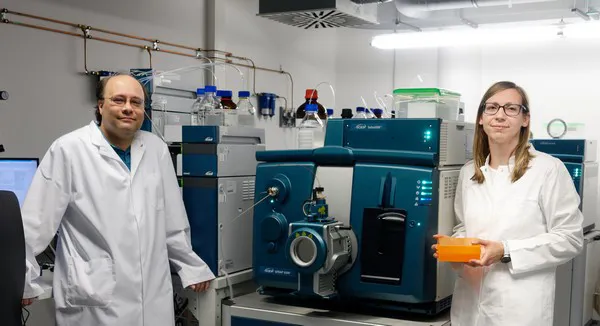Chanterelles give savoury dishes a rich body and a uniquely complex flavor. Experts refer to this as the kokumi effect. A research team from the Technical University of Munich (TUM) and the Leibniz-Institute for Food Systems Biology recently developed the first method to clearly quantify chanterelle-specific key substances that contribute to this effect. This method can also be used for quality control.
Chanterelles (Cantharellus cibarius) are one of the most popular mushrooms in Germany. Depending on the weather, chanterelle season starts in early July. Connoisseurs value the mushroom’s delicate fruity aroma, which is reminiscent of apricots, and its aromatic and slightly bitter taste profile. Not only do chanterelles have a unique flavor profile, they also function as taste enhancers, lending dishes a well-rounded mouthfeel and a lingering, rich flavor.

Key substances for the kokumi sensation
“Using the ultra-high-performance liquid chromatography-mass spectrometry method developed by our team, we are now the first to accurately quantify the key substances in chanterelles that are responsible for the kokumi effect”, says Dr. Verena Mittermeier from the TUM Chair of Food Chemistry and Molecular Sensory Science. Dr. Verena Mittermeier already contributed significantly to the study during her time as a PhD student under Prof. Thomas Hofmann, who now serves as the President of TUM.
As the research team’s findings show, the effect is caused by natural substances derived from fatty acids. Storage conditions, such as duration of storage and temperature, affect the composition and concentration of these fatty acid derivatives in the mushrooms. Whether the mushrooms are stored whole or chopped also plays a role.
New quality control marker
According to food chemist Andreas Dunkel from the Leibniz-Institute for Food Systems Biology at the Technical University of Munich, some of these derivatives are specific to chanterelles and can therefore be used as markers to control the quality of mushroom products. These findings could also be used to systematically improve the flavor profile of mushroom dishes or other savoury dishes using natural substances.
Andreas Dunkel explains: “Kokumi is a Japanese word that does not refer to a specific flavor quality such as salty or sweet.” Instead, the fatty acid derivatives modulate the sensory characteristics of other ingredients.
Publication:
Mittermeier VK, Pauly K, Dunkel A, Hofmann T (2020) J Agric Food Chem 68 (20): 5741–5751, DOI: 10.1021/acs.jafc.0c02034. Ion-mobility-based liquid chromatography–mass spectrometry quantitation of taste-enhancing octadecadien-12-ynoic acids in mushrooms
For more information:
Dr. Verena Mittermeier
Chair of Food Chemistry and Molecular Sensory Science
Tel: +49 8161 71 2992
Email: verena.mittermeier@tum.de
Andreas Dunkel
Leibniz-Institute for Food Systems Biologyat the Technical University of Munich
Tel: +49 8161 71 2903
Email: a.dunkel.leibniz-lsb@tum.de
